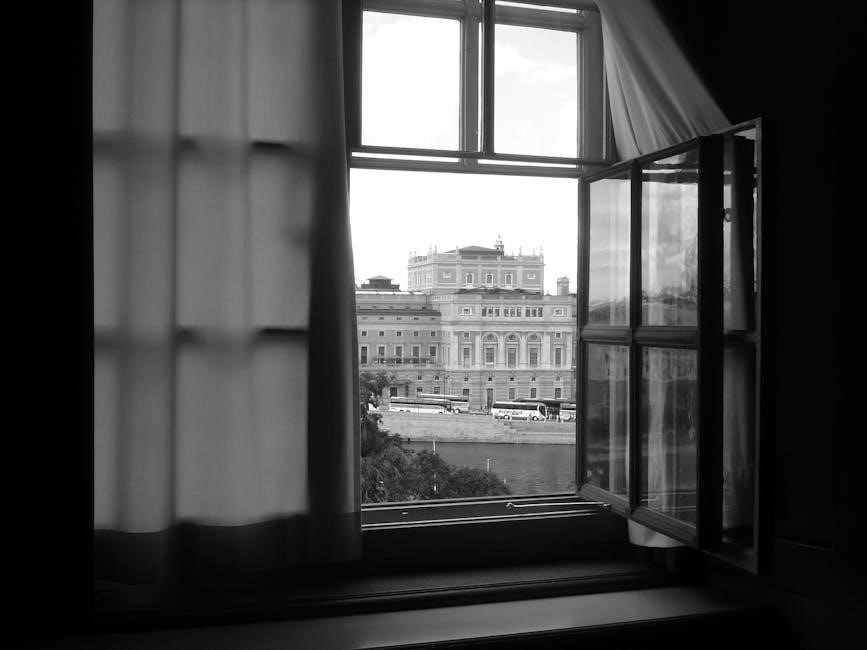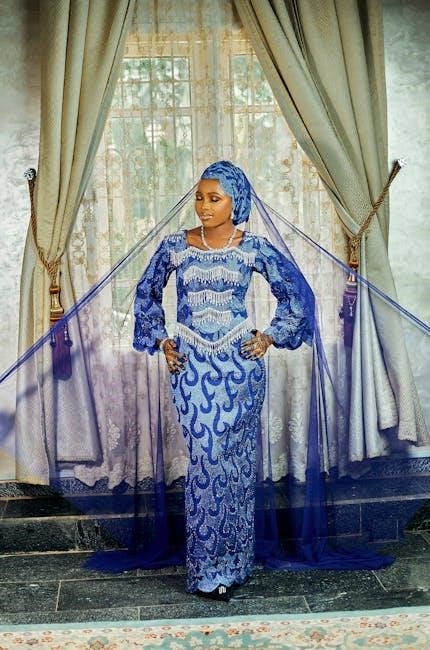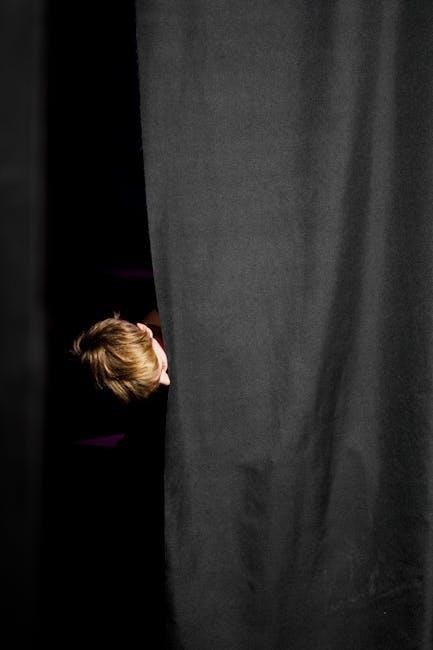
tortilla curtain pdf
T.C. Boyle’s The Tortilla Curtain is a gripping novel exploring the lives of two couples: the privileged Mossbachers and the struggling Mexican immigrants, Candido and America Rincon. Set in Los Angeles, the story delves into themes of immigration, class inequality, and the illusion of the American Dream, offering a poignant critique of societal divides.
Overview of the Novel
T. Coraghessan Boyle’s The Tortilla Curtain is a thought-provoking novel set in Los Angeles, exploring the lives of two contrasting couples: the affluent, liberal Mossbachers and the undocumented Mexican immigrants, Candido and America Rincon. The story intertwines their struggles, shedding light on themes of illegal immigration, class inequality, and the illusion of the American Dream. Through their interconnected lives, Boyle critiques societal divides, highlighting the tensions between privilege and survival. A car accident involving Delaney Mossbacher and Candido sparks a chain of events that exposes the fragility of their worlds. The novel is celebrated for its nuanced portrayal of cultural and economic disparities. Its adaptation into a play further underscores its relevance in contemporary discussions on immigration and social justice.
Author Background: T. Coraghessan Boyle
T. Coraghessan Boyle is a celebrated American novelist and short story writer, born in 1948. Known for his versatile and provocative storytelling, Boyle explores themes of social justice, environmentalism, and human folly. His works often blend humor with sharp critiques of societal norms, making him a prominent voice in contemporary literature. With a career spanning multiple decades, Boyle has authored numerous novels and short story collections, solidifying his reputation as a master of satirical fiction. His ability to weave complex characters and moral dilemmas has earned him critical acclaim and a loyal readership.
Relevance of the Title “The Tortilla Curtain”
The title The Tortilla Curtain metaphorically represents the invisible yet profound barrier between the affluent and the marginalized. Drawing from the term “Iron Curtain,” it symbolizes the division between the privileged Mossbachers and the undocumented immigrants, Candido and America. The curtain signifies the cultural, economic, and social separation that defines their lives. Boyle uses this title to highlight the stark contrasts and underlying tensions in suburban America, emphasizing the themes of inequality and the elusive American Dream that the novel explores.

Historical and Cultural Context
The Tortilla Curtain reflects the cultural divide of the 1990s, exploring tensions between privileged Americans and Mexican immigrants, highlighting issues of identity and socioeconomic disparity.
The Mexican-American Border as a Symbol
The Mexican-American border in The Tortilla Curtain serves as a powerful symbol of division, inequality, and cultural clash. It represents both a physical and metaphorical barrier, separating the privileged lives of suburban Americans from the struggles of undocumented immigrants. Boyle uses the border to highlight themes of identity, socioeconomic disparity, and the illusion of the American Dream. The “Tortilla Curtain” itself becomes a metaphor for the invisible yet rigid divide between two worlds, emphasizing the tensions and complexities of immigration in the 1990s.
Illegal Immigration in the 1990s
In the 1990s, illegal immigration became a contentious issue in the U.S., particularly along the Mexican-American border. The novel highlights the struggles of undocumented immigrants like Candido and America Rincon, who face economic hardship, exploitation, and legal challenges. Boyle portrays the era’s rising anti-immigrant sentiment and restrictive policies, which exacerbated tensions between immigrants and native-born citizens. The decade saw increased border militarization and debates over amnesty, reflecting a society grappling with cultural and economic changes. This backdrop underscores the novel’s exploration of identity, survival, and the elusive American Dream for those living in the shadows.
The “Tortilla Curtain” as a Metaphor
The “Tortilla Curtain” serves as a powerful metaphor for the invisible yet impenetrable divide between socioeconomic classes and cultures. In the novel, it symbolizes the separation between the affluent Mossbachers and the impoverished Rincons, reflecting broader societal divisions. Boyle uses this imagery to critique the barriers erected by privilege, prejudice, and policy, which prevent true understanding and connection. The curtain not only represents physical separation but also emotional and ideological distance, highlighting the futility of attempting to ignore or escape the realities of inequality. This metaphor underscores the novel’s themes of isolation and the illusion of a seamless society.

Main Characters and Their Struggles
Delaney Mossbacher, a liberal idealist, grapples with hypocrisy and guilt. Kyra Mossbacher, his privileged wife, embodies suburban complacency. Candido Rincon, a desperate immigrant, fights for survival. America Rincon, his resilient wife, endures exploitation and loss, seeking hope in a hostile world.
Delaney Mossbacher: The Liberal Idealist
Delaney Mossbacher, a self-proclaimed liberal humanist, embodies the contradictions of privilege and idealism. His polished facade crumbles when a car accident involving a Mexican man forces him to confront his complicity in systemic inequality. Despite his progressive rhetoric, Delaney struggles with hypocrisy, as his actions often betray his ideals. His privileged lifestyle in Arroyo Blanco Estates contrasts sharply with the desperation of immigrants like Candido Rincon. The accident shakes Delaney to his core, revealing the fractures in his moral framework and the illusion of his detached liberalism, highlighting the disconnect between his beliefs and the harsh realities of the world around him.
Kyra Mossbacher: The Privileged Wife
Kyra Mossbacher, Delaney’s wife, represents the epitome of suburban privilege and complacency. Her life is marked by luxury and disconnect from the struggles of others. While she expresses outrage over minor injustices, like a dog locked in a car, she remains indifferent to the human suffering around her. Kyra’s character highlights the superficiality of her liberal values, as her actions fail to align with her progressive rhetoric. Her privilege blinds her to the harsh realities faced by immigrants like America Rincon, underscoring the novel’s critique of societal apathy and the illusion of moral superiority among the elite.
Candido Rincon: The Struggling Immigrant
Candido Rincon, a Mexican immigrant, embodies the harsh realities of illegal immigration in 1990s America. Alongside his wife, America, he faces poverty, exploitation, and constant fear of deportation. Despite his determination to build a better life, Candido is met with systemic injustice and personal tragedy. His story contrasts sharply with the privileged existence of the Mossbachers, highlighting the stark divide between the haves and have-nots. Candido’s resilience in the face of adversity underscores the novel’s exploration of the American Dream’s elusiveness and the dehumanizing effects of marginalization.
America Rincon: The Resilient Survivor
America Rincon, Candido’s wife, is a symbol of resilience and survival. As a young Mexican immigrant, she endures immense hardships, including poverty, exploitation, and the constant threat of deportation. Despite her struggles, America remains determined to create a better life for herself and her unborn child. Her resourcefulness and strength in the face of adversity provide a stark contrast to the privileged Mossbachers. America’s journey highlights the challenges faced by undocumented immigrants and the enduring hope for a brighter future, even in the harshest circumstances. Her character embodies the resilience of those marginalized by societal structures.

Themes Explored in the Novel
The novel explores themes of immigration, class inequality, and the illusion of the American Dream, highlighting societal divisions and human resilience in a fragmented world.
The American Dream and Its Illusions
The novel critiques the illusion of the American Dream through the contrasting lives of the Mossbachers and the Rincons. Candido and America Rincon, Mexican immigrants, embody the struggle for survival and upward mobility, while the Mossbachers represent privilege and complacency. Delaney’s liberalism is tested when reality confronts his ideals, exposing the gap between perception and truth. The car accident serves as a catalyst, intertwining their fates and revealing the harsh realities of poverty, marginalization, and the elusive nature of the American Dream. Boyle’s satire underscores the socio-economic disparities that make the Dream unattainable for many.
Racism and Xenophobia in Suburban America
Boyle vividly portrays racism and xenophobia through the Mossbachers’ interactions with Candido and America. Delaney’s initial liberal facade crumbles, revealing underlying prejudices when confronted with the immigrants’ presence. Kyra’s outrage over a dog’s plight contrasts sharply with her indifference to human suffering, highlighting societal hypocrisy. The novel critiques suburban America’s insular mindset, where fear of the “other” perpetuates division. Boyle’s satire exposes the subtle yet pervasive racism embedded in privileged communities, challenging readers to confront uncomfortable truths about their own biases and the broader societal attitudes toward immigrants.
Socioeconomic Disparities and Inequality
The Tortilla Curtain starkly illustrates the vast socioeconomic divide between the Mossbachers and the Rincons. Delaney and Kyra’s affluent lifestyle in Arroyo Blanco Estates contrasts brutally with Candido and America’s daily struggle for survival. Boyle highlights how systemic inequality traps immigrants in a cycle of poverty, denying them access to basic rights and opportunities. The novel underscores the hypocrisy of a society that celebrates prosperity while ignoring the exploitation and marginalization of its most vulnerable members, offering a scathing critique of class disparities in America. This disparity serves as the backbone of the narrative’s tension and moral commentary.
Environmentalism and Human Impact
The Tortilla Curtain explores the clash between environmental ideals and human reality through Delaney Mossbacher, a self-proclaimed environmentalist. His enthusiasm for nature contrasts sharply with his complicity in the exploitation of the land and its marginalized inhabitants. The novel critiques suburban sprawl and the destruction of natural habitats, symbolized by the fragile ecosystem of Topanga Canyon. Boyle highlights the disconnect between privileged ideologies and the harsh survival struggles of immigrants like Candido and America, whose existence is deeply intertwined with the land. This tension underscores the novel’s broader commentary on humanity’s conflicted relationship with the environment and its ethical responsibilities.

Literary Style and Satire
T.C. Boyle employs biting satire in The Tortilla Curtain, using exaggeration and irony to expose societal hypocrisies. His narrative alternates perspectives, blending humor with sharp critiques of privilege and prejudice, highlighting the absurdity of human contradictions.
Boyle’s Use of Satire to Critique Society
In The Tortilla Curtain, Boyle masterfully employs satire to critique societal norms, exposing hypocrisy and inequality. Through the Mossbachers, he mocks liberal pretensions, revealing a disconnect between progressive ideals and actions. The novel satirizes suburban elitism, racism, and the illusion of the American Dream, using exaggerated characters and situations to highlight societal flaws. Boyle’s sharp irony and dark humor underscore the absurdity of class divisions and xenophobia, while the “tortilla curtain” metaphor symbolizes the invisible yet oppressive barriers between cultures. His narrative voice alternates perspectives, amplifying the tension between privilege and survival, making the novel a biting commentary on modern society.
Narrative Structure and Multiple Perspectives
Boyle’s The Tortilla Curtain features a dynamic narrative structure, alternating between the viewpoints of Delaney Mossbacher and Candido Rincon. This dual perspective provides a nuanced exploration of their contrasting worlds, highlighting the societal divide. The shifting narratives allow readers to witness the same events through different lenses, fostering empathy and understanding. By juxtaposing the Mossbachers’ privileged life with the Rincons’ struggles, Boyle emphasizes the disparity and interconnectedness of their lives. This structure not only heightens tension but also underscores the novel’s themes of immigration, class, and identity, creating a layered and thought-provoking reading experience.
Symbolism in the Novel
In The Tortilla Curtain, Boyle employs rich symbolism to explore themes of division and identity. The titular “tortilla curtain” symbolizes the invisible yet impenetrable barrier between the Mossbachers’ privileged world and the Rincons’ struggles. The car accident serves as a catalyst, symbolizing the collision of two realities. The canyon setting represents a fragile ecosystem, mirroring the characters’ precarious lives. Boyle also uses the Mossbachers’ gated community as a symbol of suburban complacency, contrasting it with the Rincons’ resilience. These symbols weave together to highlight societal divides, immigration challenges, and the illusion of security, creating a powerful commentary on modern America.

Cultural and Social Commentary
The Tortilla Curtain offers a sharp commentary on cultural clashes, urbanization’s impact on marginalized communities, and media’s role in shaping perceptions, reflecting societal tensions through its characters’ struggles.
The Clash of Cultures in Los Angeles
Los Angeles in The Tortilla Curtain serves as a backdrop for the stark cultural divide between the Mossbachers and the Rincons. Boyle portrays the city as a melting pot where privilege and poverty collide. The Mossbachers’ affluent lifestyle contrasts with the Rincons’ daily struggles, highlighting the friction between Anglo and Latino cultures. This clash is further exacerbated by urbanization, which pushes marginalized communities to the fringes. Boyle’s depiction of Los Angeles underscores the tensions arising from cultural differences, economic disparities, and the fragile coexistence of diverse groups in a sprawling metropolis.
Urbanization and Its Effects on Marginalized Communities
Urbanization in The Tortilla Curtain perpetuates the marginalization of immigrants like Candido and America Rincon. The novel illustrates how rapid development and gentrification push low-income and undocumented workers to the peripheries of society. Limited access to resources, housing, and employment forces them into precarious living conditions. Boyle critiques urban policies that prioritize wealth over welfare, leaving vulnerable populations exposed to exploitation and neglect. This systemic exclusion underscores the broader societal failures that trap marginalized communities in cycles of poverty and invisibility, mirroring real-world challenges faced by urban immigrants.
The Role of Media in Shaping Perceptions
In The Tortilla Curtain, media plays a crucial role in shaping public perceptions of immigration and race. Delaney Mossbacher, a liberal idealist, is influenced by media narratives that often sensationalize illegal immigration, fostering stereotypes and fear. Boyle satirizes how media can distort reality, portraying immigrants as threats rather than human beings. This misrepresentation fuels xenophobia and polarizes communities, as seen in the Mossbachers’ suburban enclave. The novel highlights how media’s selective storytelling can perpetuate division and dehumanization, contributing to the “tortilla curtain” that separates worlds, both physically and metaphorically.

Plot and Key Events
The novel begins with a car accident involving Delaney Mossbacher and Candido Rincon, sparking a chain of events that intertwines their lives. Their paths collide, revealing tragic consequences.
The Car Accident and Its Aftermath
The car accident involving Delaney Mossbacher and Candido Rincon sets off a series of events that deeply affect both characters. Delaney, a liberal idealist, is shaken by the incident, which challenges his perceptions of himself and his privileged lifestyle. Candido, already struggling as an undocumented immigrant, faces further hardship as the accident exacerbates his precarious situation. This pivotal moment highlights the stark contrast between the Mossbachers’ comfortable existence and the Rincóns’ daily struggles, setting the stage for a tragic exploration of class, identity, and societal divides.
The Interconnected Lives of the Mossbachers and Rincons
The lives of the Mossbachers and Rincons become intricately intertwined, revealing the stark contrasts between privilege and poverty. Delaney and Kyra Mossbacher, living in their gated community, symbolize suburban complacency, while Candido and America Rincon struggle as undocumented immigrants. Their paths cross in unexpected ways, exposing the fragility of social barriers and the shared human experiences that bind them. Boyle masterfully weaves their stories, highlighting the tension between illusion and reality, as their interconnected lives unfold in a tragic dance of fate and circumstance.
The Tragic Convergence of Dreams and Reality
The novel reaches a poignant climax as the Mossbachers’ illusions of security and the Rincons’ hopes for a better life collide with harsh realities. Delaney’s car accident, a pivotal moment, unravels his facade of liberalism, while Candido and America face relentless adversity; Boyle’s narrative reveals how the pursuit of the American Dream often leads to disillusionment, as both couples confront the limits of their aspirations. The convergence of their stories underscores the fragility of hope and the inevitability of tragedy, leaving a lasting reflection on the human condition and societal divides.

Adaptations and Stage Performances
T.C. Boyle’s The Tortilla Curtain has been adapted into a stage play, premiering at San Diego Rep. The production brings the novel’s complex themes to life, drawing critical acclaim for its theatrical interpretation of the Mossbachers’ and Rincons’ intertwined struggles.
The Novel’s Adaptation into a Play
T.C. Boyle’s The Tortilla Curtain was adapted into a stage play, premiering at San Diego Rep. The production brought the novel’s complex themes to life, drawing critical acclaim for its theatrical interpretation. The play captures the intertwined struggles of the Mossbachers and Rincons, exploring themes of immigration, class, and the American Dream. Its adaptation retains the novel’s satirical edge, offering a powerful commentary on societal divides. The stage version has been praised for its faithful portrayal of Boyle’s vision, making it a compelling experience for both fans of the novel and new audiences.
Reception of the Stage Production
The stage adaptation of The Tortilla Curtain received widespread critical acclaim for its thought-provoking portrayal of societal divides. Audiences praised its ability to translate the novel’s complex themes into a captivating theatrical experience. Critics highlighted the production’s faithful adherence to Boyle’s original vision, commending its bold storytelling and emotional depth. The play resonated deeply, sparking discussions on immigration and inequality. Its success underscores the timeless relevance of Boyle’s work, proving the novel’s adaptability across mediums while maintaining its powerful social commentary.

Reception and Critical Analysis
T.C. Boyle’s The Tortilla Curtain received widespread critical acclaim for its thought-provoking exploration of immigration, class, and identity. Scholars praised its nuanced portrayal of societal inequalities, while readers appreciated its ability to spark essential discussions on modern issues.
Critical Acclaim and Controversies
T.C. Boyle’s The Tortilla Curtain garnered significant critical acclaim for its bold exploration of immigration, class, and identity. Reviewers praised its thought-provoking narrative and timely commentary on societal divides. However, the novel also sparked controversy due to its satirical portrayal of privilege and its unflinching depiction of racial tensions. Some critics argued that Boyle’s approach risked reinforcing stereotypes, while others lauded his ability to confront uncomfortable truths. The book became a polarizing yet essential discussion point, cementing its reputation as a fearless critique of modern America’s complexities and inequalities.
Comparisons to Other Works by Boyle
While The Tortilla Curtain shares T.C. Boyle’s signature satirical wit and social critique, it diverges in tone and focus from his other works. Unlike the historical depth of Water Music or the environmental themes of A Friend of the Earth, this novel zeroes in on contemporary immigration issues. Its narrative structure, alternating between two families, resembles East Is East but with a sharper, more politicized edge. Boyle’s ability to blend humor with biting commentary remains consistent, yet The Tortilla Curtain stands out for its unflinching look at the American Dream’s illusion and its human cost.
Impact on Literary Discussions About Immigration
The Tortilla Curtain has significantly influenced literary discussions on immigration, offering a vivid portrayal of the struggles faced by undocumented immigrants. Boyle’s unflinching depiction of Candido and America Rincon’s hardships has sparked debates about borders, identity, and inequality. The novel challenges readers to confront the complexities of immigration, humanizing the experiences of marginalized communities. Its satirical yet empathetic approach has made it a key text in exploring the American Dream’s illusion and the realities of displacement. This work continues to resonate in contemporary discussions, highlighting the enduring relevance of immigration narratives in modern literature.

Study Resources and Availability
Study resources for The Tortilla Curtain are widely available, including PDF versions and online study guides, providing easy access for academic analysis and deeper understanding of the novel.
PDF Versions and Online Access
PDF versions of The Tortilla Curtain are readily available online, offering convenient access for readers and scholars. These digital editions can be downloaded from various platforms, including academic databases and e-book retailers. Many PDFs include annotations, study guides, and critical analyses, enhancing understanding of Boyle’s nuanced exploration of immigration and societal divides. Online access ensures that students and researchers can easily engage with the text, making it a valuable resource for literary studies and discussions about the novel’s themes and cultural relevance.
Study Guides and Educational Materials
Study guides and educational materials for The Tortilla Curtain are widely available, offering in-depth analyses and teaching resources. These materials often include summaries, character breakdowns, and thematic explorations, aiding students in understanding Boyle’s nuanced portrayal of immigration and societal divides. Many guides provide historical context and discussion questions, fostering critical thinking. Educators can access lesson plans and essay prompts, while students benefit from annotated versions and exam prep aids. These resources enhance comprehension of the novel’s complex themes, making them invaluable for academic settings and independent study.
Teaching the Novel in Academic Settings
The Tortilla Curtain is a valuable addition to academic curricula, offering insights into immigration, class, and identity. Educators can use the novel to explore themes of inequality and the American Dream through guided discussions and reflective essays. Its complex characters and layered narrative encourage critical thinking and empathy. Supplementary materials, such as PDF study guides, provide structured lesson plans and analysis tools, helping instructors create engaging and thought-provoking classroom experiences. The novel’s relevance to contemporary issues makes it an effective tool for fostering meaningful dialogue in diverse academic environments.
The Tortilla Curtain remains a thought-provoking critique of societal divides, offering timeless reflections on immigration, class, and identity. Its legacy endures as a vital commentary on modern America.
Final Thoughts on the Novel’s Relevance
The Tortilla Curtain remains a powerful exploration of cultural and socioeconomic divides, offering a searing critique of immigration policies and societal intolerance. Its portrayal of the Mossbachers and Rincons highlights the clash of privilege and survival, resonating deeply in today’s globalized world. Boyle’s vivid storytelling underscores the timeless struggle for dignity and opportunity, making the novel a crucial commentary on contemporary issues. Its relevance lies in its ability to provoke empathy and reflection, urging readers to confront the complexities of human migration and the enduring quest for the American Dream.
Legacy of “The Tortilla Curtain” in Modern Literature
The Tortilla Curtain has left an indelible mark on modern literature, praised for its unflinching portrayal of immigration and class conflict; Boyle’s masterful use of satire and interconnected narratives has influenced a generation of writers tackling similar themes. The novel’s adaptation into a play further cemented its cultural impact, reaching broader audiences. Its exploration of the American Dream’s illusion continues to resonate, making it a seminal work in discussions about identity, inequality, and social justice. As a result, “The Tortilla Curtain” stands as a testament to Boyle’s enduring contribution to contemporary literary discourse.